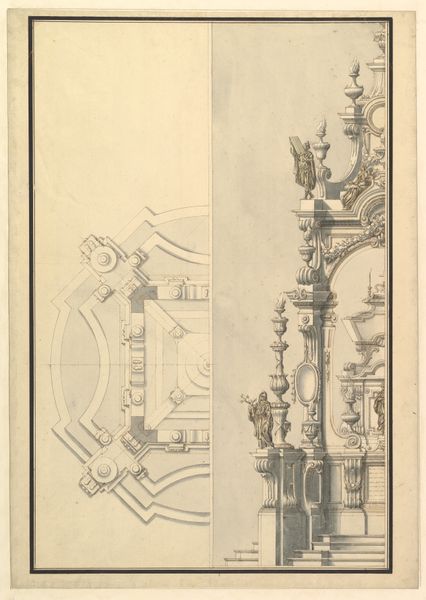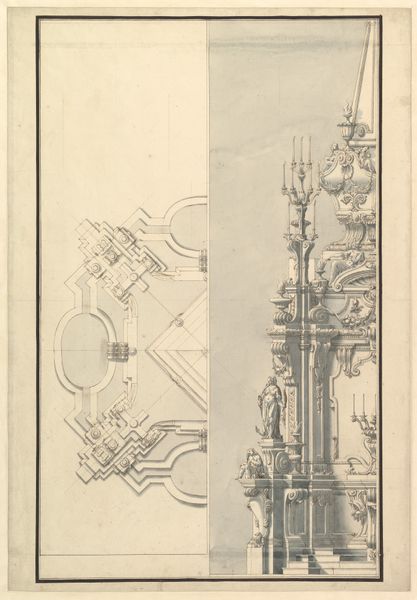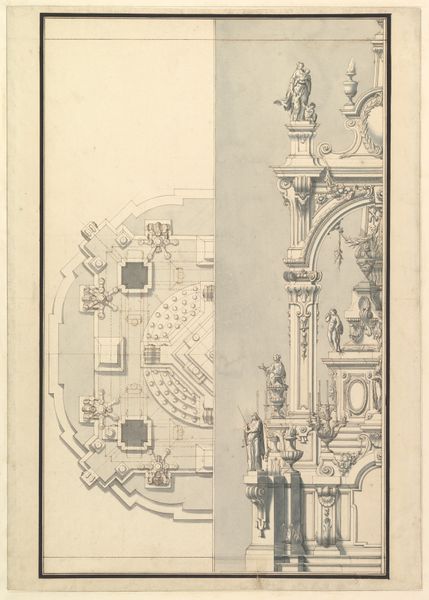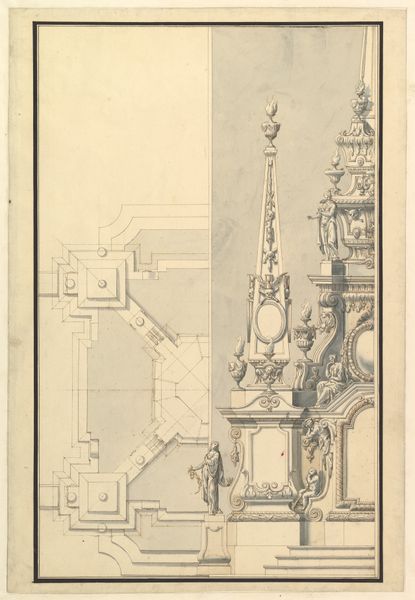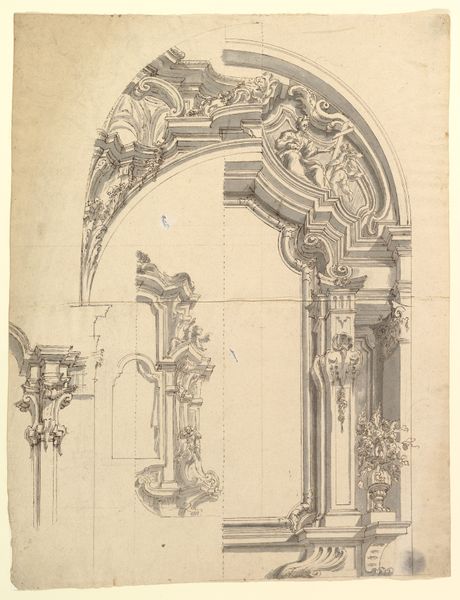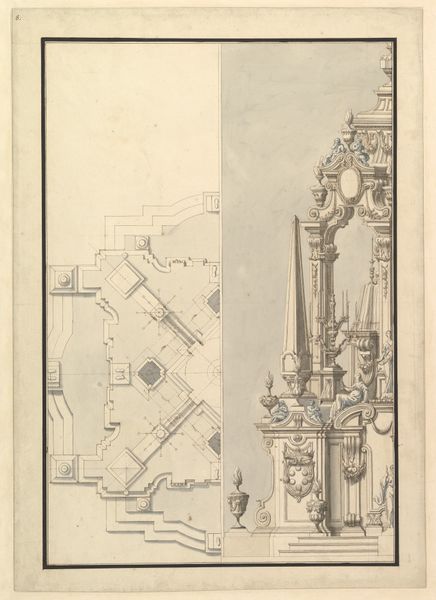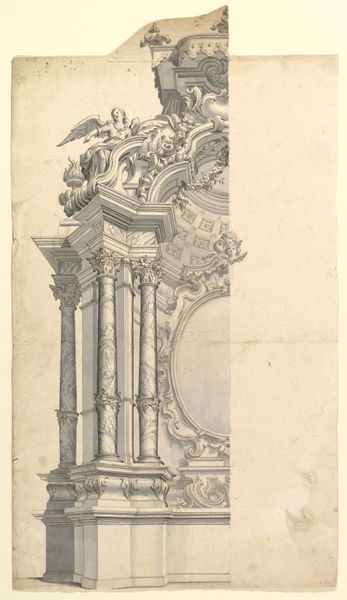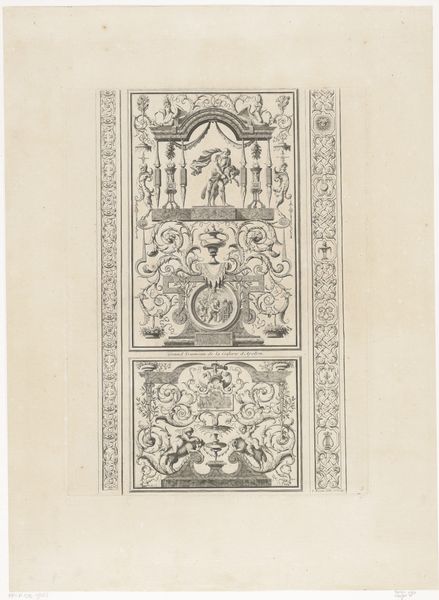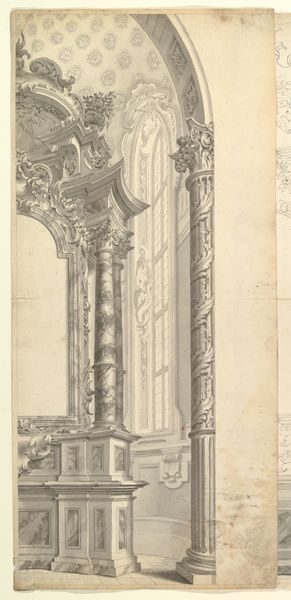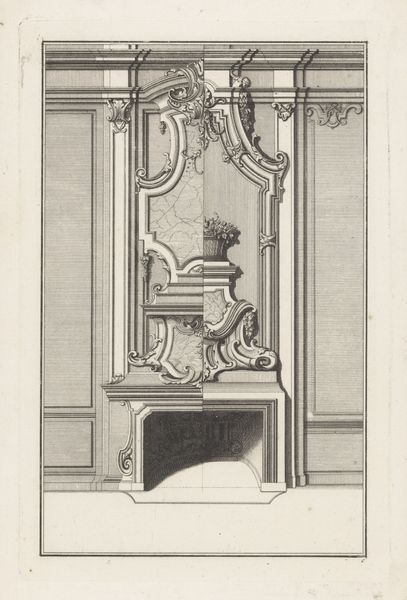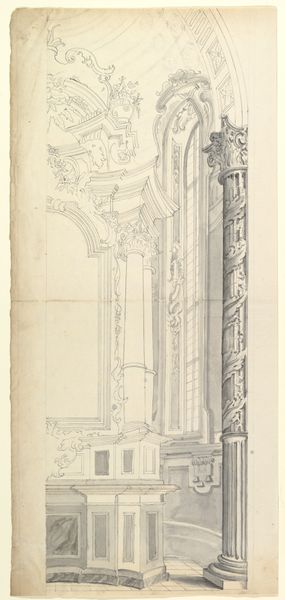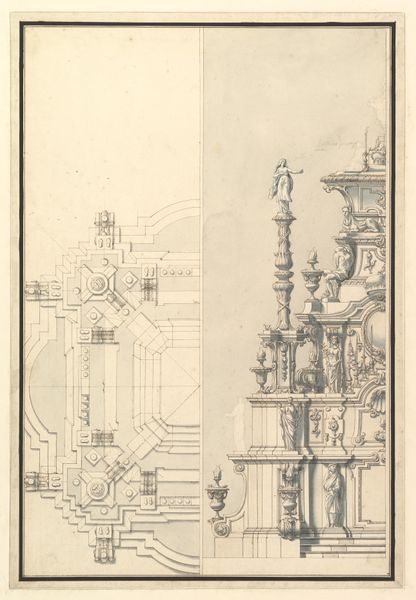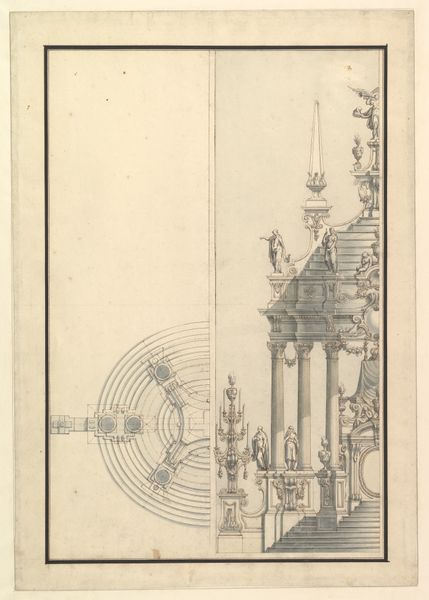
Half Plan and Half Elevation for a Catafalque for Margarita Louisa, Gran Duchess of Tuscany (d. 1721) 1716 - 1726
drawing, print, intaglio, architecture
drawing
baroque
intaglio
architecture
Dimensions: 20-3/8 x 14-1/4 in. (51.8 x 36.2 cm)
Copyright: Public Domain
Curator: This drawing, held here at the Met, presents half a plan and half an elevation of a catafalque designed for Margarita Louisa, Grand Duchess of Tuscany. Giuseppe Galli Bibiena created this intriguing rendering between 1716 and 1726. Editor: My first impression? It's an architectural ghost story, rendered in delicate greys. So precise, so detailed, yet it speaks of absence. A blueprint for grief, almost. Curator: Exactly! The architectural drawing showcases Bibiena's mastery of Baroque stage design and ephemeral structures. The plan is mathematical, almost sterile. Editor: But the elevation… there's where the Baroque soul erupts. Swirls, statues, theatrical ornamentation piling up like emotional baggage. Tell me, what did a catafalque represent in that era? Curator: Catafalques were elaborate, temporary structures erected to honor the deceased during memorial services, stand-ins for the body, really. Symbols of status, power, and of course, grief. The Grand Duchess, a powerful woman of her time… Editor: The symbols! The sheer amount of them – figures pointing skyward, flaming urns… it's like a visual language for loss, meticulously constructed. And half the drawing is a rigid floor plan, the grid holding back the emotional chaos of the other half. Curator: Yes! Notice how Bibiena contrasts precise architectural elements with the swirling, decorative details. It represents the contrast between the permanence of architecture and the fleeting nature of life and memory. This wasn’t built to last. It existed only to be experienced, then dismantled. Editor: That impermanence adds another layer of pathos, doesn't it? All that effort, all that artistry poured into something temporary. Makes you think about our own fleeting moments and how we memorialize them – or don’t. And what all this says about Baroque sensibilities. Were they comfortable with elaborate theatrical displays around death? Curator: Absolutely. Death wasn't necessarily a somber affair; it was often a theatrical event. These structures served as visual reminders of the deceased's earthly power while simultaneously emphasizing the transient nature of life, inviting reflection on mortality. Editor: Thinking about it now, that tension is really the heart of the drawing: precision versus passion, permanence versus transience, floorplan versus frenzy. Beautifully rendered in ink. Curator: Yes, Giuseppe Galli Bibiena truly captures a moment, both personal and societal. I find that dichotomy profoundly moving. Editor: Indeed. It gives you a peculiar sense of our collective history, distilled in monochrome tones and architectural renderings. It is more than lines on paper, wouldn’t you agree?
Comments
No comments
Be the first to comment and join the conversation on the ultimate creative platform.
